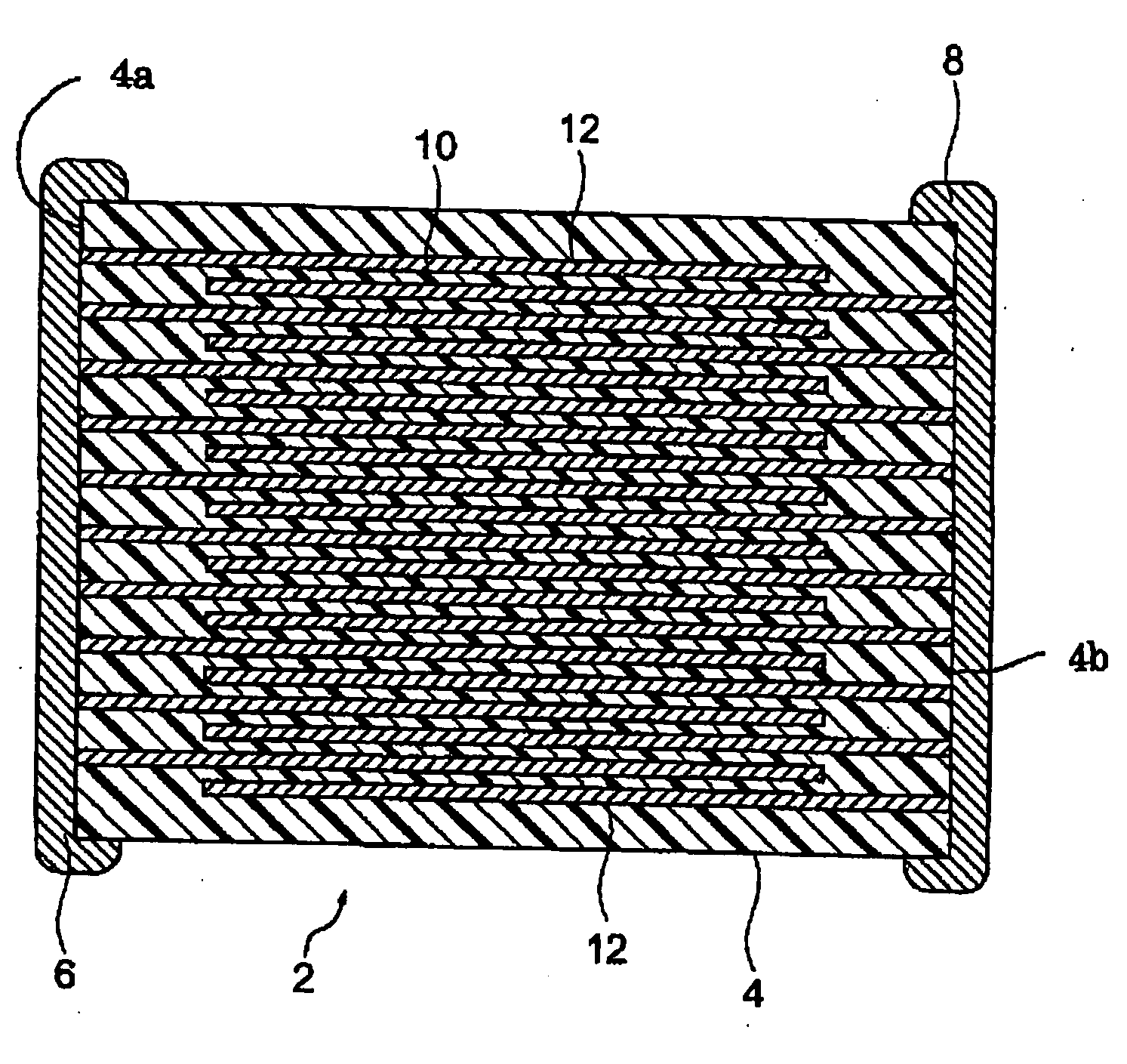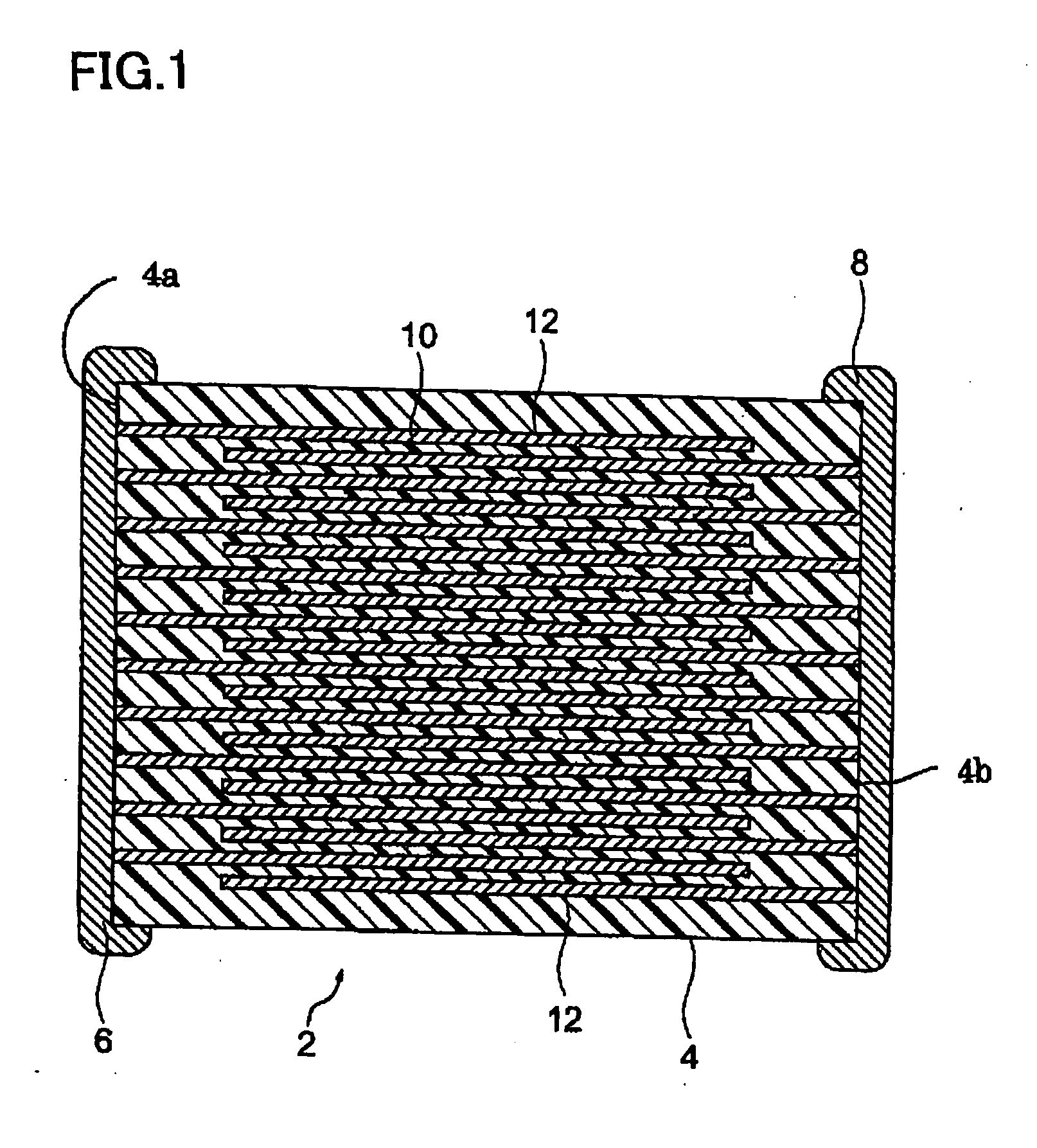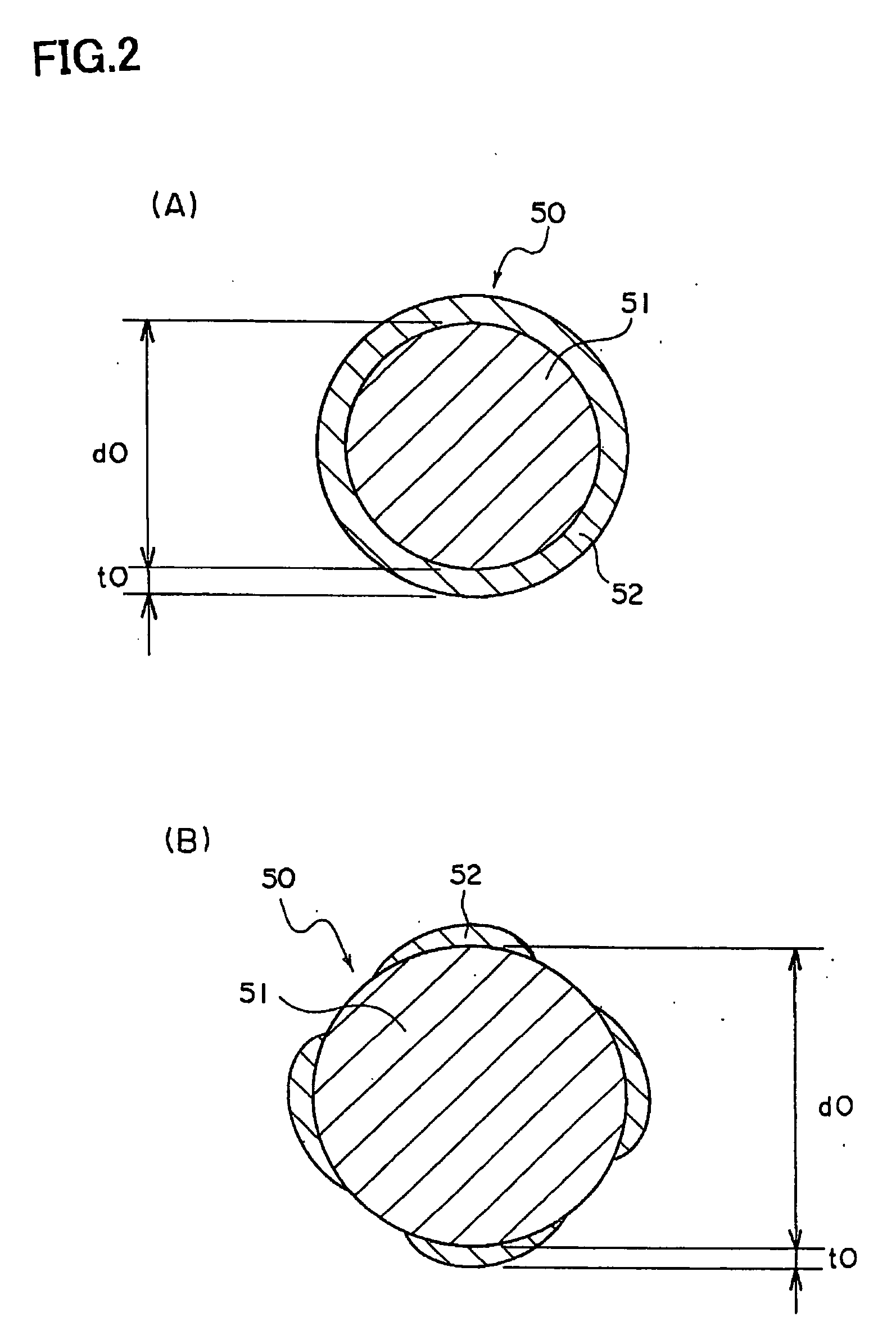Method of Production of a Conductive Particle, Conductive Paste, and Method of Production of Electronic Device
a technology of conductive particles and conductive paste, which is applied in the direction of non-conductive materials with dispersed conductive materials, fixed capacitors, solid-state diffusion coatings, etc., can solve the problems of internal electrode layers cracking or peeling, high cost of multi-layer ceramic capacitors, and high cost of precious metals, so as to prevent spheroidization and reduce the electrostatic capacity. , the effect of preventing electrode disconnection
- Summary
- Abstract
- Description
- Claims
- Application Information
AI Technical Summary
Benefits of technology
Problems solved by technology
Method used
Image
Examples
example 1
[0129] This example was performed in a glove box with an N2 flow with an oxygen content of 0.005 vol %.
[0130] 1 g of Pt chloride hydrate was dissolved in 1 liter of water, then 1 g of PVA (one example of a water-soluble polymer compound) with a saponification degree of 88 mol % (0.1 wt % with respect to Pt chloride aqueous solution) was added and the mixture vigorously stirred to prepare a Pt chloride aqueous solution. Next, 13 g of an Ni powder having an average particle size of 100 nm was charged into the Pt chloride aqueous solution and the result stirred to prepare an aqueous dispersion.
[0131] Further, separate from this aqueous dispersion, 0.47 g of hydrazine hydrate 80% was added to 470 ml of water and the two mixed uniformly to prepare a hydrazine aqueous solution.
[0132] Next, the previously prepared Pt chloride aqueous solution containing Ni powder was vigorously stirred at room temperature while slowly adding a hydrazine aqueous solution at a rate of about 10 ml / min. By ...
example 2
[0134] Except for replacing the PVA with another example of a water-soluble polymer compound, that is, a copolymer of methyl acrylate and acrylic acid (acid value 10 mgKOH / g, molecular weight of 100,000), the same procedure was followed as in Example 1 to produce conductive particles. This was observed in the same way as in Example 1.
[0135] The heat treated powder obtained in this example was examined under a scanning electron microscope, whereupon it was found there was no Pt segregation. Further, when observed under a TEM, it was confirmed that tens of Pt particles of 10 nm or less were deposited on the surfaces of the Ni particles.
example 3
[0136] Except for replacing the PVA with the use of an acetylene diol-based non-ionic surfactant (HLB value 10), the same procedure was followed as in Example 1 to produce conductive particles which were examined in the same way as in Example 1.
[0137] The heat treated powder obtained in this example was examined under a scanning electron microscope, whereupon it was found there was no Pt segregation. Further, when observed under a TEM, it was confirmed that tens of Pt particles of 10 nm or less were deposited on the surfaces of the Ni particles.
PUM
| Property | Measurement | Unit |
|---|---|---|
| length | aaaaa | aaaaa |
| thickness | aaaaa | aaaaa |
| partial pressure | aaaaa | aaaaa |
Abstract
Description
Claims
Application Information
 Login to View More
Login to View More - R&D
- Intellectual Property
- Life Sciences
- Materials
- Tech Scout
- Unparalleled Data Quality
- Higher Quality Content
- 60% Fewer Hallucinations
Browse by: Latest US Patents, China's latest patents, Technical Efficacy Thesaurus, Application Domain, Technology Topic, Popular Technical Reports.
© 2025 PatSnap. All rights reserved.Legal|Privacy policy|Modern Slavery Act Transparency Statement|Sitemap|About US| Contact US: help@patsnap.com



